How to Grow a Rose Bush
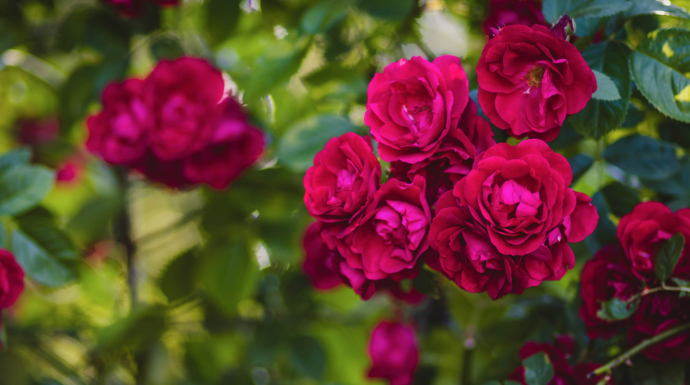
Everyone loves the beauty and scent of roses! As Shakespeare wrote, “The rose looks fair, but fairer we it deem For that sweet odour which doth in it live.” Roses have a reputation for being difficult to grow and disease-prone, but some of this may stem from rose lovers' obsession with perfection—producing the ultimate blooms each season. In reality, roses are pretty tough survivors and will thrive with little to no care. But it certainly is true that roses like a little pampering and will reward your extra efforts with vigorous growth and spectacular flowers. Well-maintained plants also tend to have fewer of the common rose problems, such as mildew or winter damage. For most roses, spring is the most important time for tending to roses, getting them in ship shape for the growing—and blooming—season.
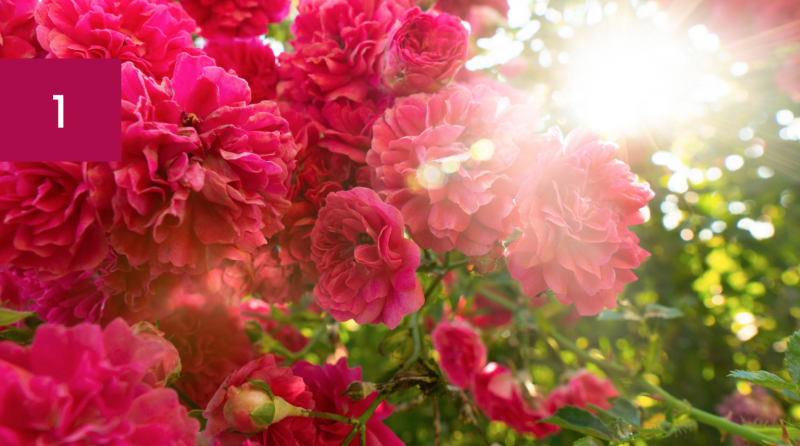
Rule 1. Select the Right Spot
Before planting your rose garden take some time to determine the best place. Roses are happy when they get the right place to grow in. The right chill spot for roses is a place with enough sunlight. Better yet, find a place that receives direct sunlight, for a minimum of six hours a day. While a few rose varieties may probably adapt to lightly shaded areas, most will not love growing in the part to full shade. They grow and even force some flowers, but even then, the flowers will be small, few and more susceptible to suffering from pests and diseases.
Tips:
1. Find a place with rich, well-drained soil. If this doesn’t sound like any spot in your yard, amend the soil with compost before planting.
2. Roses prefer slightly acidic soil (6.0-6.5 pH is best). Don’t know your soil’s pH? Get a pH test kit and find out.
3. Be sure your rose site will get plenty of water. Plan to install a drip irrigation system or use a garden hose to water regularly.
4. Roses need at least 8-10 hours of sun a day, so choose a site away from shade-inducing trees or houses.
5. If you have to pick, morning sun is better than afternoon sun as it will dry the dew that encourages fungus.
6. Imagine your roses as mature plants. Then, make sure your site will have enough room for each plant without being cramped.
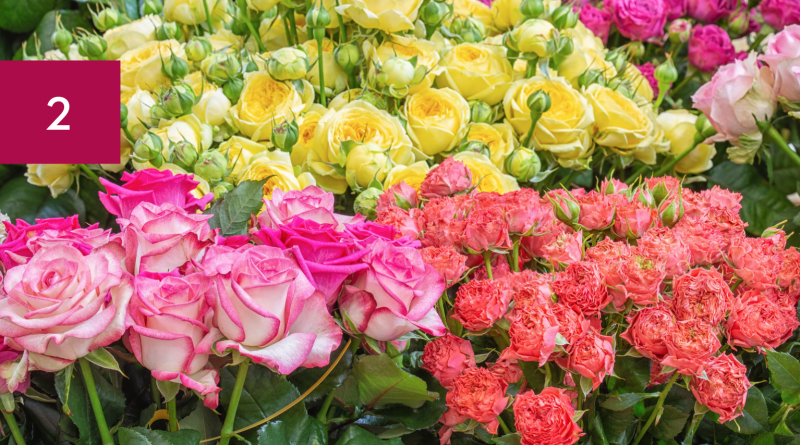
Rule 2. Choose your roses wisely
There are numerous classes of roses, ranging from micro-miniatures to grandifloras, and from groundcovers to climbing roses, with some classes containing hundreds of varieties. While it may be tempting to fill your rose garden with a wide assortment, you are likely to end up with a disorderly array and too many plants for the space. A few well-chosen varieties will give you more satisfaction than dozens of mismatched plants that don’t work in harmony. Limiting the number of rose varieties you grow will help you avoid creating a disorderly and mismatched array.
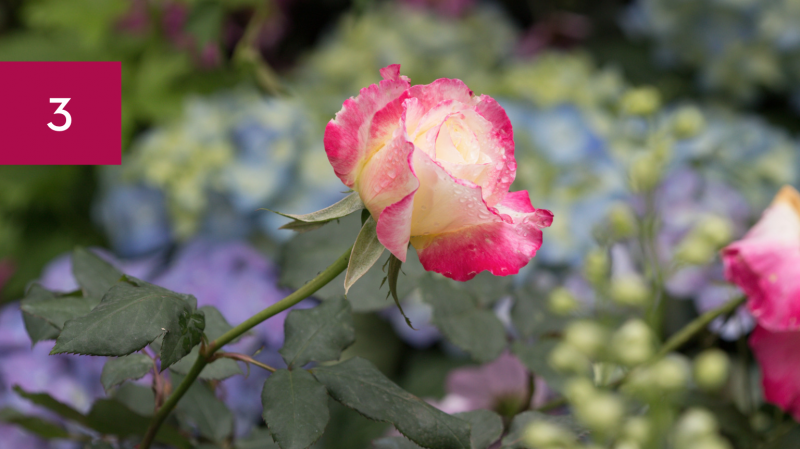
Rule 3. Get the timing right
Roses are best planted in the spring (after the last frost). When you decide to plant a rose, you may opt to do it when the plant is already in bloom. The benefit of planting roses in the spring around April or May is that you’ll get an instant burst of color. Many people love planting rose bushes that are already in bloom so they can enjoy the beauty of the rose sooner. However, this can make it more difficult for the roses to adapt to their new environment and yield a decent amount of growth. Bare-root roses are typically available only in early spring and should be planted soon after you bring them home. Roses purchased in containers give you more flexibility in planting time.
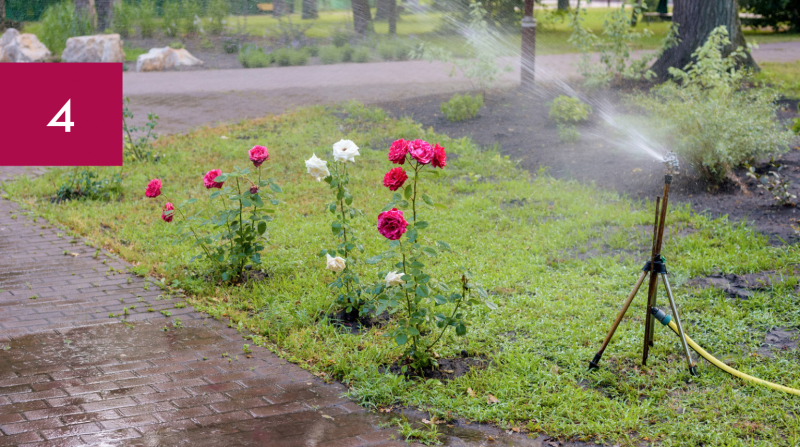
Rule 4. Water the roses like a pro
Water is an essential part of caring for roses. Roses will not grow in water-logged soils. For maximum growth, you should plant them in soils that have good drainage. Roses need a lot of water, but how much is a lot will vary. Typically, it is best to water roses twice a week—and to water them thoroughly. It's better to water deeply twice per week than to water less deeply more often. Avoid late-evening watering, which can foster powdery mildew, a very common disease among rose plants. By watering at the end of the day, you are not giving the sunlight a chance to dry things out before night falls. The result is that moisture hangs around all night, creating optimal conditions for powdery mildew. For the same reason, avoid watering roses from above. Getting the leaves wet will only invite an infestation of powdery mildew. Instead, apply the water at ground level.
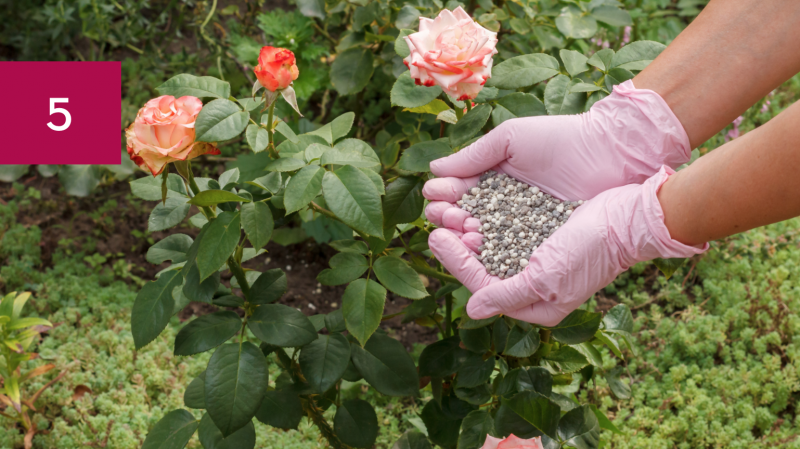
Rule 5. Fertilizer
Do roses need food? Yes, they definitely do. With their long blooming season, they will require lots of nutrients. We just never notice. In fact, roses, sometimes need specific types of “food” that help them grow better, bigger and faster. Slow releasing fertilizers work best for rose gardens. There are specific fertilizers for roses. However, keeping a good aged compost around the base of the shrub as mulch will decompose and also provide many good nutrients for the shrub. This is a great option when you lack the option or energy to get to the hardware store for fertilizer. There a many different approaches to feeding roses, but a good rule of thumb for beginners is to feed them monthly with a 10-10-10 rose fertilizer. Start feeding them when they are actively growing in spring, coinciding with pruning time.
Following these 5 simple rules on growing roses will help you to grow beautiful roses. Do you grow roses in your garden? Tell me in comments!

How to start from a vine
How lone does it take
When the best time to prune
How do you start roses from seeds